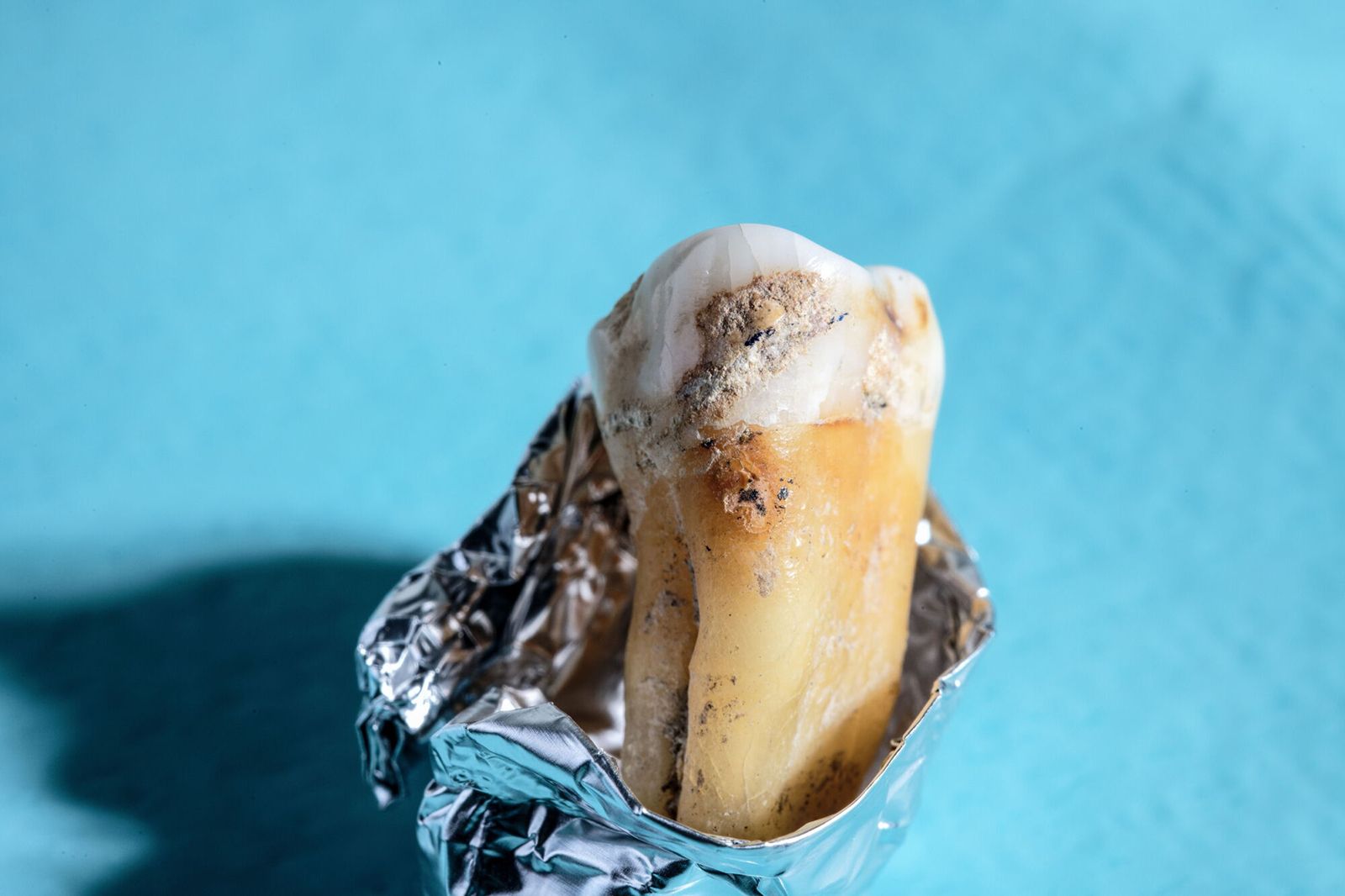Neanderthal Tartar Helps Unlock New Field of Paleobiotechnology
Researchers pioneering the new field of paleobiotechnology are reviving the natural byproducts of Pleistocene-era bacteria based on DNA recovered from prehistoric calculus.
Dental calculus found on ancient human and Neanderthal teeth preserves DNA over millennia, providing unprecedented information about the biodiversity and functional capabilities of ancient microbes. Source: Werner Siemens Foundation, Felix Wey

A new study published in Science showcases the work of an international, interdisciplinary team of researchers who econstructed ancient genomes and employed biotechnology to unlock the potential of microorganisms from the Paleolithic era.
Researchers from the Leibniz Institute for Natural Product Research and Infection Biology, the Max Planck Institute for Evolutionary Anthropology, and Harvard University participated in the project that began with collecting DNA fragments trapped in calculus from teeth dating back as far as 100,000 years.
The end goal of this line of research could be the discovery of new antibiotics or other medications that can be produced by microbes encoded with the genes of previously extinct bacteria. The process involves using computers to reconstruct the DNA of ancient microbes from fragments recovered from fossilized subjects. However, the technique was less effective with highly degraded, older DNA fragments.
Dental calculus proved to be a good place to find larger fragments because ancient bacterial organizms essentially fossilize within the calculus. This allowed them to find DNA fragments that could be reconstructed and the team reconstructed numerous oral bacterial species, as well as other more exotic species whose genomes had not been described before.
The researchers identified a previously unknown Chlorobium on seven Paleolithic calculus samples and all seven genomes were found to contain a biosynthetic gene cluster of unknown function. To test that function the team then applied synthetic molecular biotechnology to allow living bacteria to produce the chemicals encoded by the genes.
The project was the first successful application of this approach with Paleolithic bacteria, and it resulted in discovery of a new family of microbial natural products that the researchers named “paleofurans”. Future applications for this new line of research include the development of novel antibiotics.
University of Texas Health Science Center San Antonio to Launch Center for Regenerative Sciences
June 17th 2024The center aims to translate preclinical discoveries into therapies for dental and craniofacial diseases, leveraging the school’s expertise in stem cell-based treatments and 3D printing technologies.